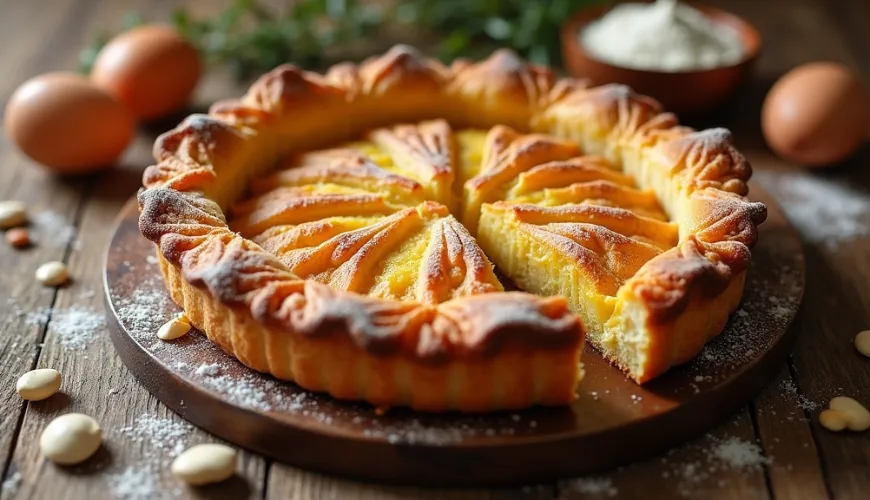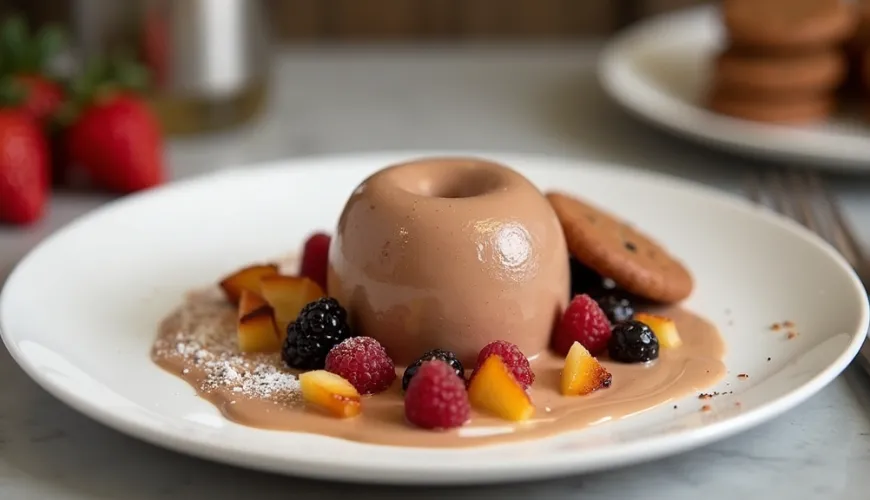
How to Easily Bake a Galette at Home and Surprise Your Loved Ones

Galette des rois - A French Tradition Filled with Almonds, Butter, and Joy
Some traditions are born quietly and then slowly leave the borders of their homeland to brighten tables and hearts all over the world. One of those gaining more and more fans here is undoubtedly the galette des rois – the king's cake that traditionally marks the start of the new year in France. What lies behind this golden puff pastry wonder? And why should you try baking it yourself this year, even if you're not a fan of baking or French customs?
A Royal Cake with a Fairytale Story
Galette des rois, literally translated as "cake of the three kings," is served annually in France on Epiphany – January 6th. This day, also known as Three Kings Day, commemorates the moment when the wise men from the East brought gifts to baby Jesus. And in this spirit, this cake is created: sweet, festive, and full of symbolism.
The basis of the traditional galette is puff pastry filled with a delicate almond filling called frangipane. What makes this treat special is the small porcelain object, known as a fève, baked directly into the cake. The person who finds the fève in their slice becomes "king" or "queen" for a day and dons a paper crown, which is included with every galette sold in pastry shops.
Although the original fèves were dried beans – hence their name – today they are most often tiny porcelain figurines, often hand-painted. In France, collecting them has become almost a passion, with some people boasting collections of hundreds of pieces.
A Sweet Competition in Every Family
You might be wondering: why should someone be "king" for a day? That is the charm of galette des rois. Families and friends gather during January to cut the cake together. A child – often the youngest at the table – crawls under the table and decides who gets which piece. This old custom ensures that the division of the cake is fair and that the random selection of the fève cannot really be influenced.
And while it's mostly about fun, in some companies or schools, finding the fève can be a small honor. For example, in French offices, several galettes are typically served in January – and whoever finds the figurine has to bring the cake next time. The tradition thus intertwines with everyday life, becoming a welcome highlight of winter days.
The French Galette and Its Regional Variations
While the classic galette des rois originates from Île-de-France and is typically filled with an almond mixture, other regions in France have different versions. For example, in Provence and the south of France, the "brioche des rois" – a leavened wreath decorated with candied fruit, resembling more an Easter bun than a puff pastry cake – is popular.
Interestingly, galette also has a savory side. In Brittany, where the term "galette" is encountered in a different context, it refers to savory pancakes made from buckwheat flour – a typical Breton specialty. Although they have nothing to do with the royal galette, they show how diverse language and culinary traditions can be.
How to Bake a Galette at Home?
Nowadays, it's not difficult to prepare a galette des rois even outside of France. Recipes are readily available, and most ingredients can be found in stores. All you need are two sheets of quality puff pastry, butter, sugar, eggs, and ground almonds. The filling is simply mixed and spread between the sheets, the edges are pressed together, the top is brushed with egg, and you can decoratively score it with a knife – typically in a spiral or checkerboard pattern. Bake until golden and don't forget the fève!
If you want to be truly authentic, decorate the cake with a golden paper crown after baking. You can buy or make one – creativity is welcome. And if you're not up for making your own figurine, an almond, bean, or small ceramic ornament from Christmas will suffice. Just be sure to inform your guests that something is hidden inside the cake!
And what if you like the galette so much that you want to bake it more often? The good news is that this treat is not limited to just Three Kings Day. In France, it is commonly sold throughout January with various filling variations – from chocolate to apples to pistachios.
When Tradition Becomes Part of a Sustainable Lifestyle
You might wonder why galette des rois is being written about on a blog focused on a sustainable lifestyle. The answer is simple: traditional recipes that bring people together, celebrate the season, and share joy are exactly what belong in a modern ecological approach.
Homemade galette baking allows you to influence not only the composition but also the origin of the ingredients. You can choose organic flour, free-range eggs, fair trade sugar, or almond flour from sustainable farming. And what's more – a handmade ceramic figurine can be a beautiful and reusable symbol, passed down in the family as a cherished heirloom.
One French family we spoke with has a tradition of creating their own fèves from ceramic clay each year, which the grandchildren then paint. "It makes the cake more memorable for everyone than just a sweet treat. It's a ritual that brings us together," says Mrs. Delphine from Lyon.
And that's what it's all about: creating memories, not waste. Instead of disposable decorations and artificial ornaments, the galette becomes a celebration of simplicity, family, and zest for life.
What is the Magic of Galette?
It's not just about the buttery pastry or the sweet nutty filling. Galette des rois is primarily about sharing, surprise, and gratitude for another year together. At a time when the holidays are over and the new year has not yet hit full stride, this cake brings a moment of joy that warms just like freshly brewed tea.
And who knows – maybe in your home, the galette will become a new tradition to look forward to every January. After all, as the old French saying goes: "une galette partagée est une année enchantée" – a shared cake brings an enchanting year.

